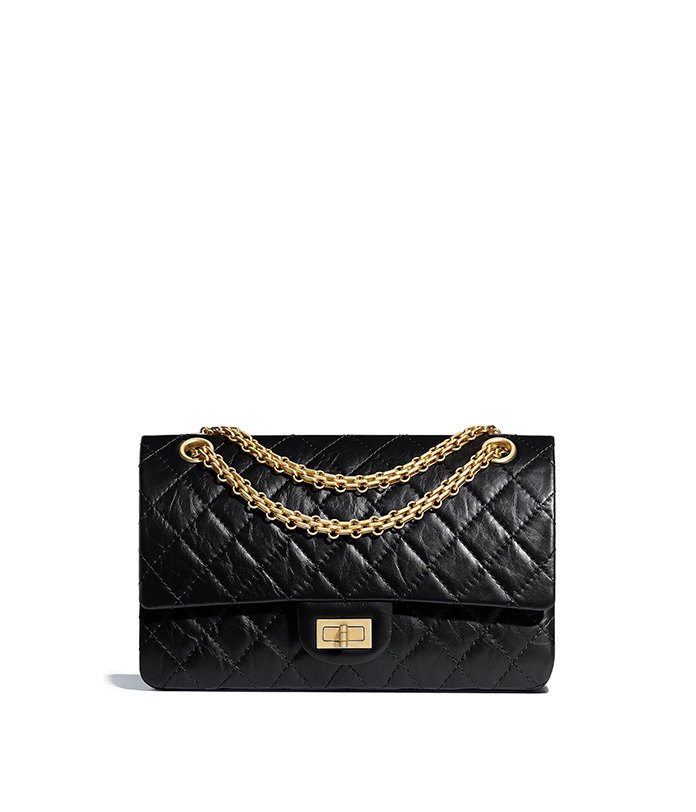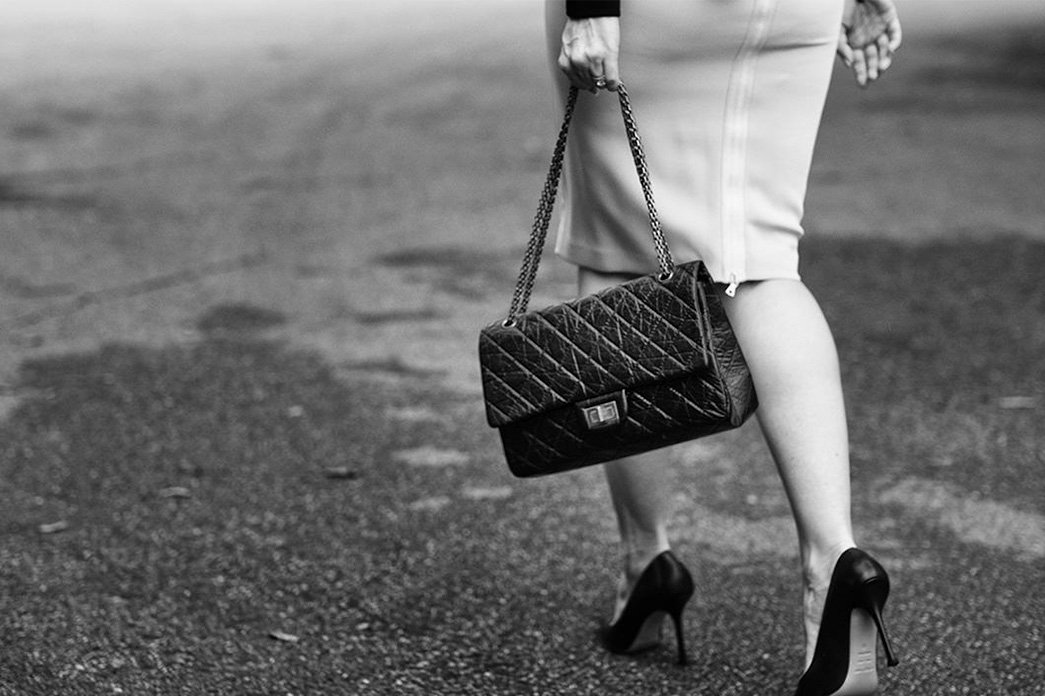
In 1920, Coco Chanel was tired of holding her handbag in her hands. And, consequently, putting it down somewhere and then not remembering where she’d put it. Resolute, she designed a more practical model, which she launched in 1929. Not satisfied, she went back to work on it. In February 1955, the world was introduced to the Chanel 2.55, named precisely after the month (2) and year (55) in which it was presented. It was the first known bag that could be worn over the shoulder. Before, all women carried their handbags, as the name suggests, with their hands, and never having total freedom of movement.
For the haute couture scene of the time, the piece was a real coup de foudre, the French expression for love at first sight. But 67 years later, it still remains an icon, the history of which is full of delicious details. One of the most exquisite symbols that luxury can buy. Both the original and its dozens of reincarnations that have come out of it.
Inspired by the postman-style cases used by messengers in the Second World War, it has a ‘secret’ zipped compartment, created, it was said, to hold the designer’s love letters. The chain strap, a rudimentary format atypical at the time for a luxury item, is said to be based on the key chains, worn at waist level, by the janitors and caretakers of the convent where Gabrielle ‘Coco’ Chanel lived, sent by her own father after the young girl’s mother died. It is also said that the burgundy lining is the same colour as the convent uniforms and that the quilted pattern is a reference to the convent’s stained-glass windows. And the matelassé leather, today one of Chanel’s trademark images, has its origins in the materials that, at the time, were only worn by men who worked in stables.
The value of a Chanel 2.55 Medium, or a Classic Flap, has increased 70% since 2010
What we are certain of is that each bag is a true work of art. The internal compartments, which contrast with most of the items that are placed inside the bag, allow everything to be located with ease. The pocket on the rear of the bag, called ‘Mona Lisa’s smile’ because it has the ends slightly raised, was used to hold extra cash and every bag has a compartment the perfect size for a lipstick. Six to fifteen artisans work on each piece, dedicating an average of 18 hours to complete each one.
The bag is available in Maxi, Jumbo, Medium, Small, Mini Rectangle and Mini Square sizes. The 2.55 is the original model, with Mademoiselle lock, created by Coco Chanel, and double chains. In the 1980s, with Karl Lagerfeld already at the head of the maison, the Classic Flap model made its debut, with the CC clasp (intertwined letters), the symbol that is so well known today, designed and developed by the designer. In 2005, Lagerfeld decided to recreate the classic 2.55, which led to the launch of the Reissue version.
Any one of them is considered an investment. Do you need proof? The value of a Chanel 2.55 Medium, or a Classic Flap, has increased by 70% since 2010. Apart from inflation, another decisive factor for this was the brand’s decision to keep the production of its bags in Europe (France and Italy), while other luxury brands migrated their manufacturing to Asia to cut costs.
Case in point, whoever has a Chanel has everything. Or almost everything...
For the haute couture scene of the time, the piece was a real coup de foudre, the French expression for love at first sight. But 67 years later, it still remains an icon, the history of which is full of delicious details. One of the most exquisite symbols that luxury can buy. Both the original and its dozens of reincarnations that have come out of it.
Inspired by the postman-style cases used by messengers in the Second World War, it has a ‘secret’ zipped compartment, created, it was said, to hold the designer’s love letters. The chain strap, a rudimentary format atypical at the time for a luxury item, is said to be based on the key chains, worn at waist level, by the janitors and caretakers of the convent where Gabrielle ‘Coco’ Chanel lived, sent by her own father after the young girl’s mother died. It is also said that the burgundy lining is the same colour as the convent uniforms and that the quilted pattern is a reference to the convent’s stained-glass windows. And the matelassé leather, today one of Chanel’s trademark images, has its origins in the materials that, at the time, were only worn by men who worked in stables.
The value of a Chanel 2.55 Medium, or a Classic Flap, has increased 70% since 2010
What we are certain of is that each bag is a true work of art. The internal compartments, which contrast with most of the items that are placed inside the bag, allow everything to be located with ease. The pocket on the rear of the bag, called ‘Mona Lisa’s smile’ because it has the ends slightly raised, was used to hold extra cash and every bag has a compartment the perfect size for a lipstick. Six to fifteen artisans work on each piece, dedicating an average of 18 hours to complete each one.
The bag is available in Maxi, Jumbo, Medium, Small, Mini Rectangle and Mini Square sizes. The 2.55 is the original model, with Mademoiselle lock, created by Coco Chanel, and double chains. In the 1980s, with Karl Lagerfeld already at the head of the maison, the Classic Flap model made its debut, with the CC clasp (intertwined letters), the symbol that is so well known today, designed and developed by the designer. In 2005, Lagerfeld decided to recreate the classic 2.55, which led to the launch of the Reissue version.
Any one of them is considered an investment. Do you need proof? The value of a Chanel 2.55 Medium, or a Classic Flap, has increased by 70% since 2010. Apart from inflation, another decisive factor for this was the brand’s decision to keep the production of its bags in Europe (France and Italy), while other luxury brands migrated their manufacturing to Asia to cut costs.
Case in point, whoever has a Chanel has everything. Or almost everything...














